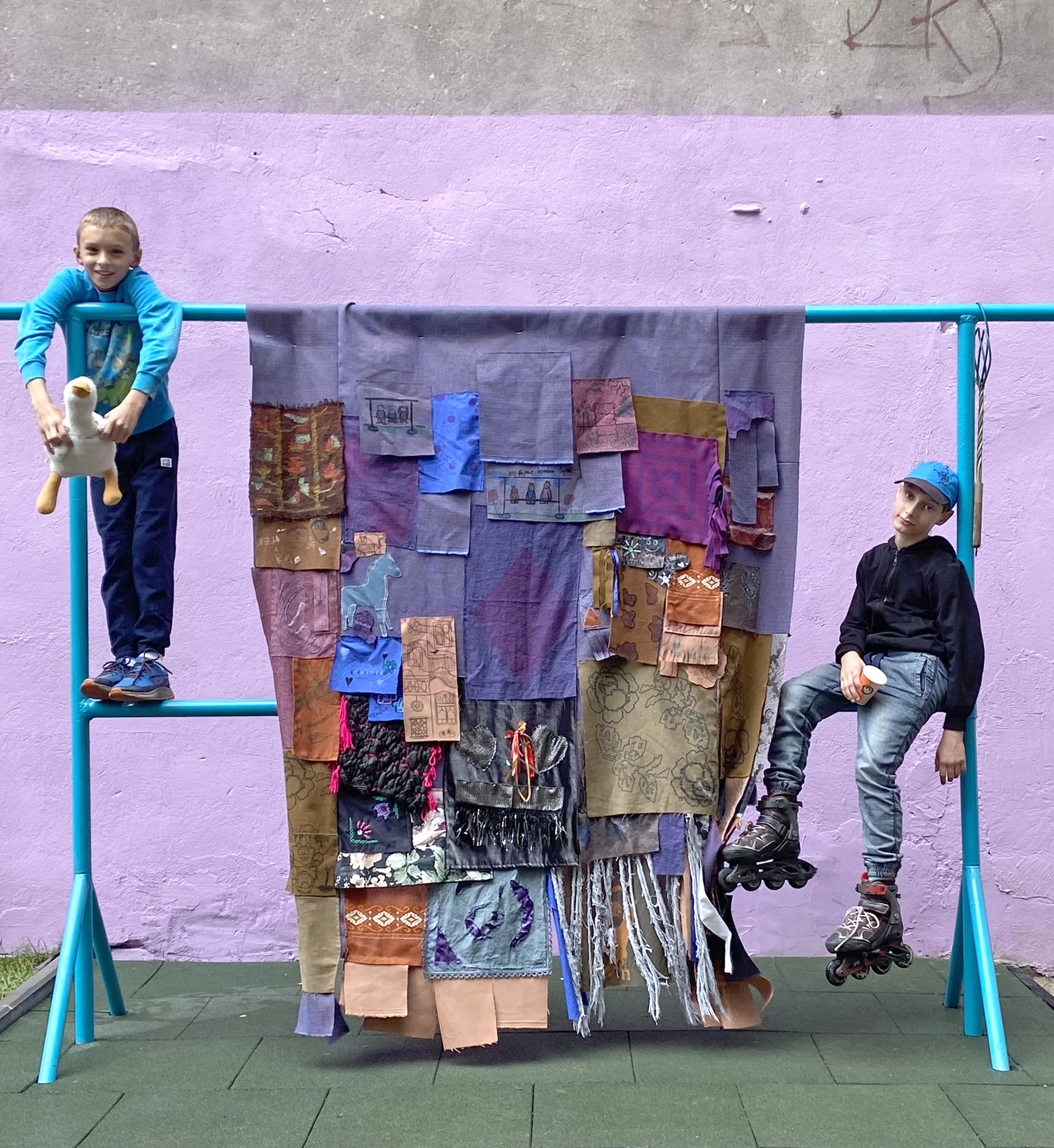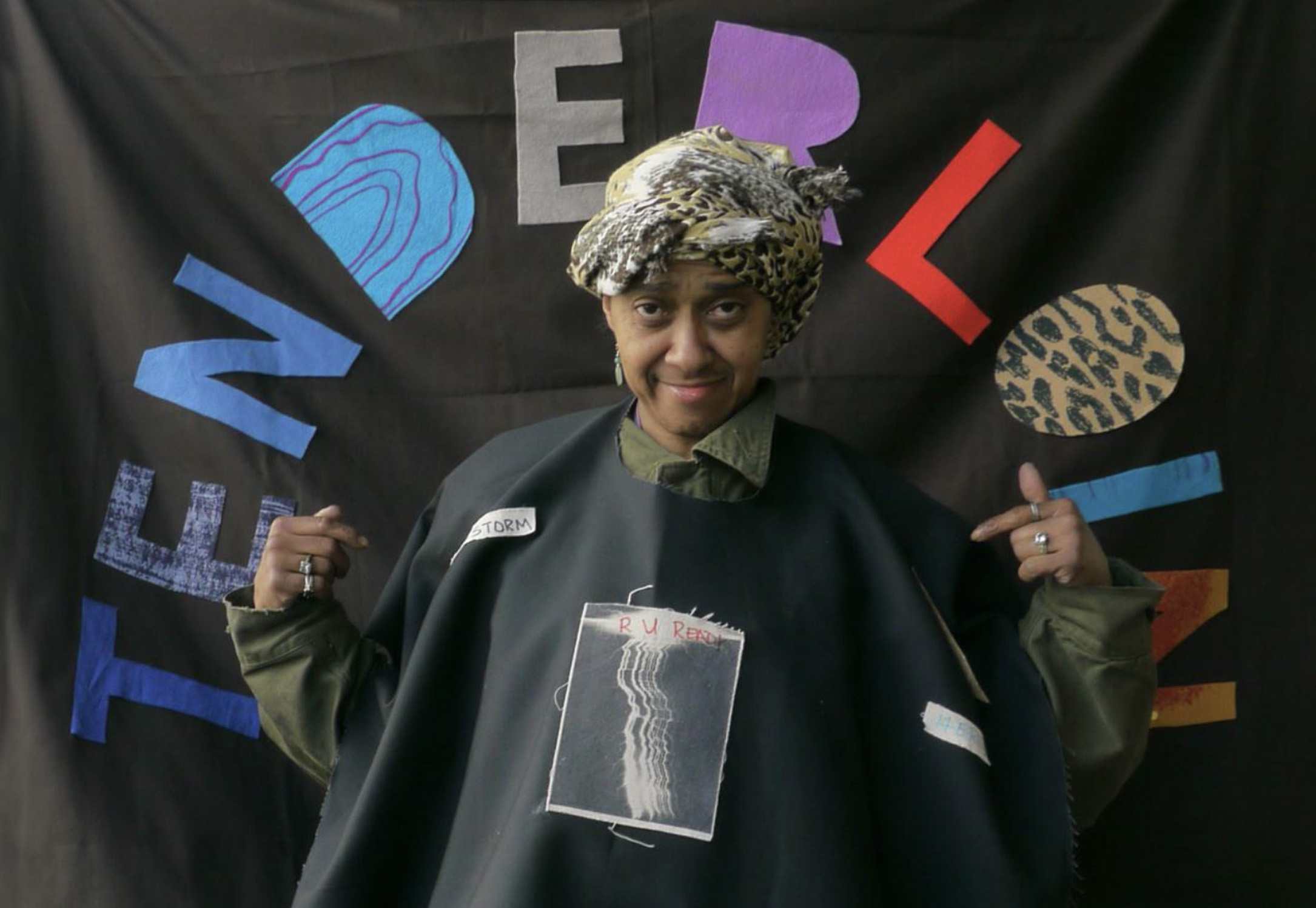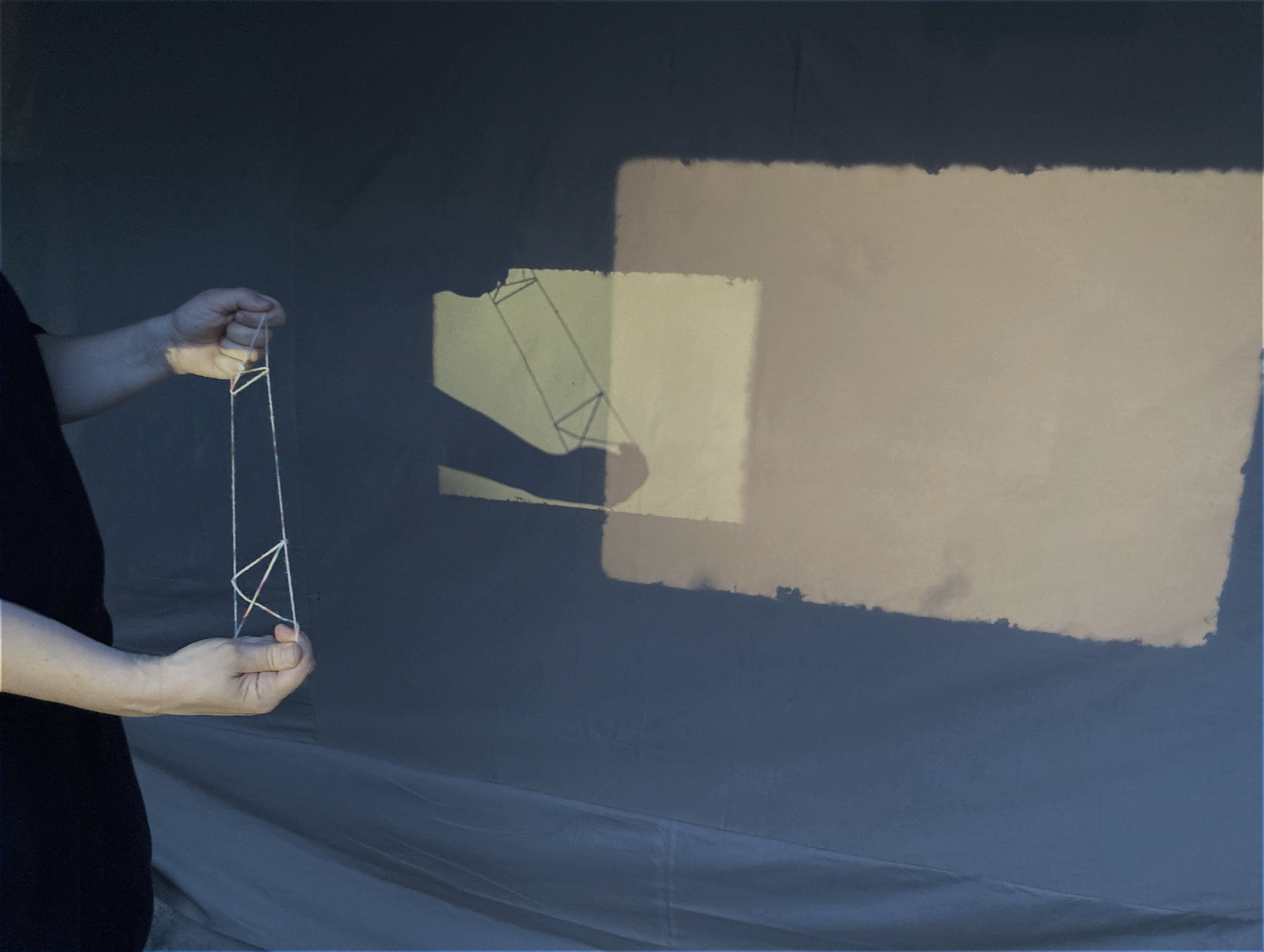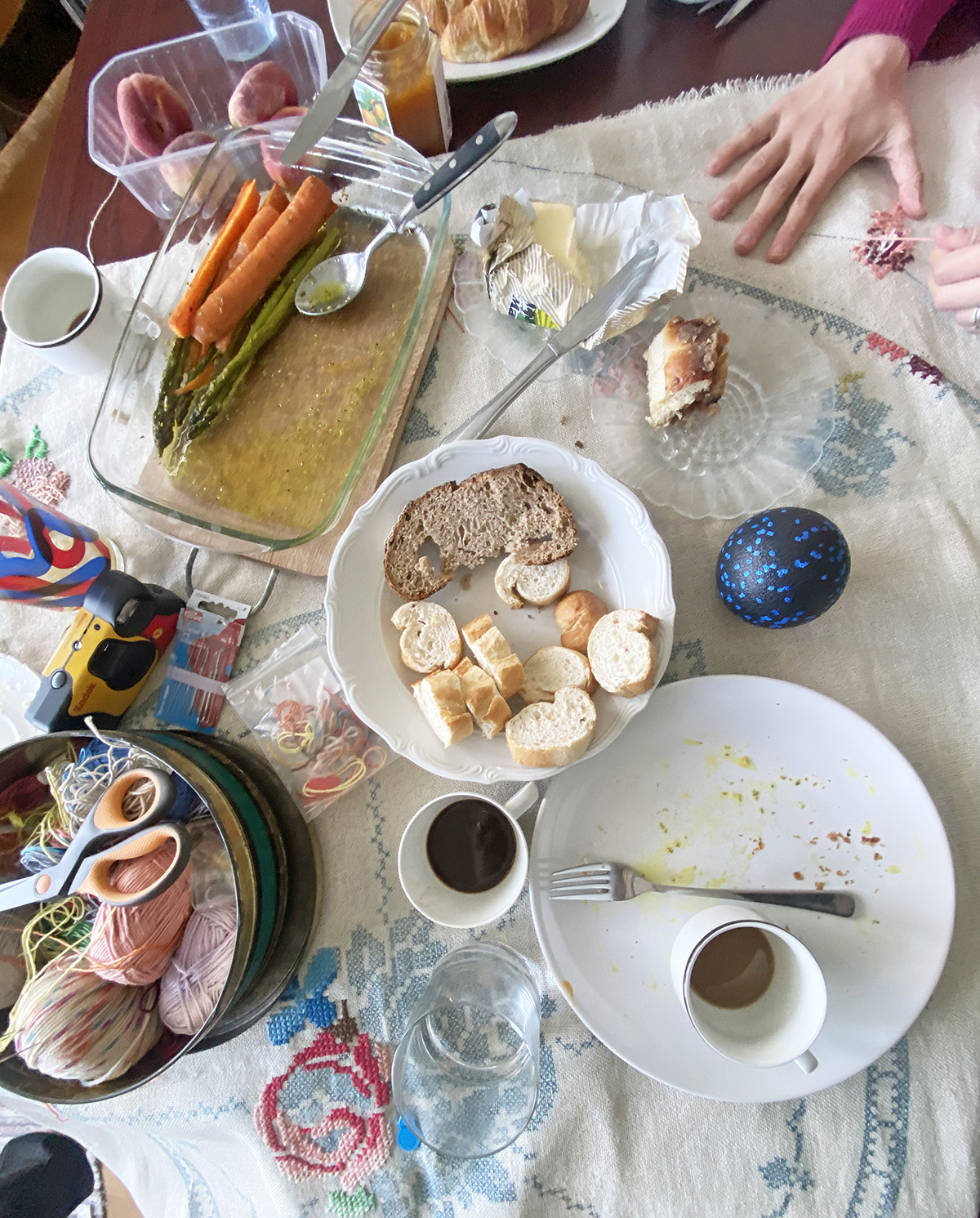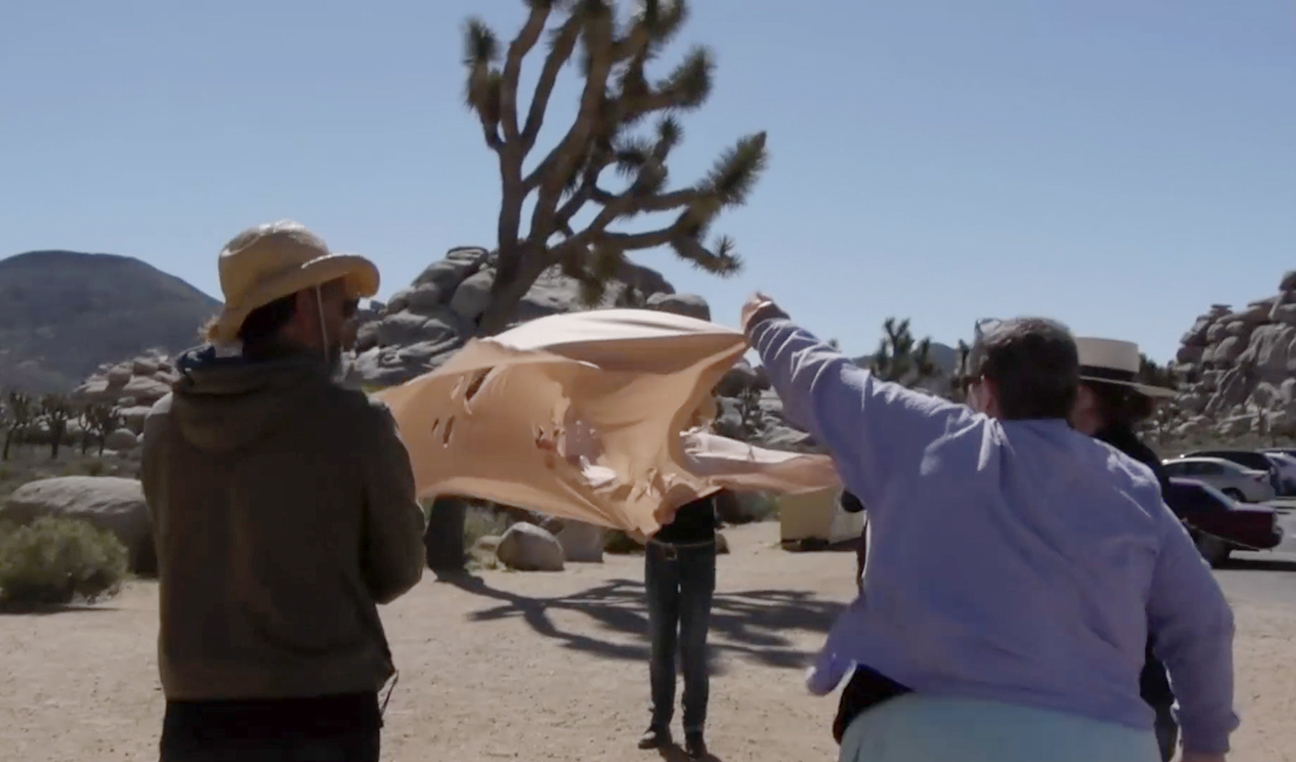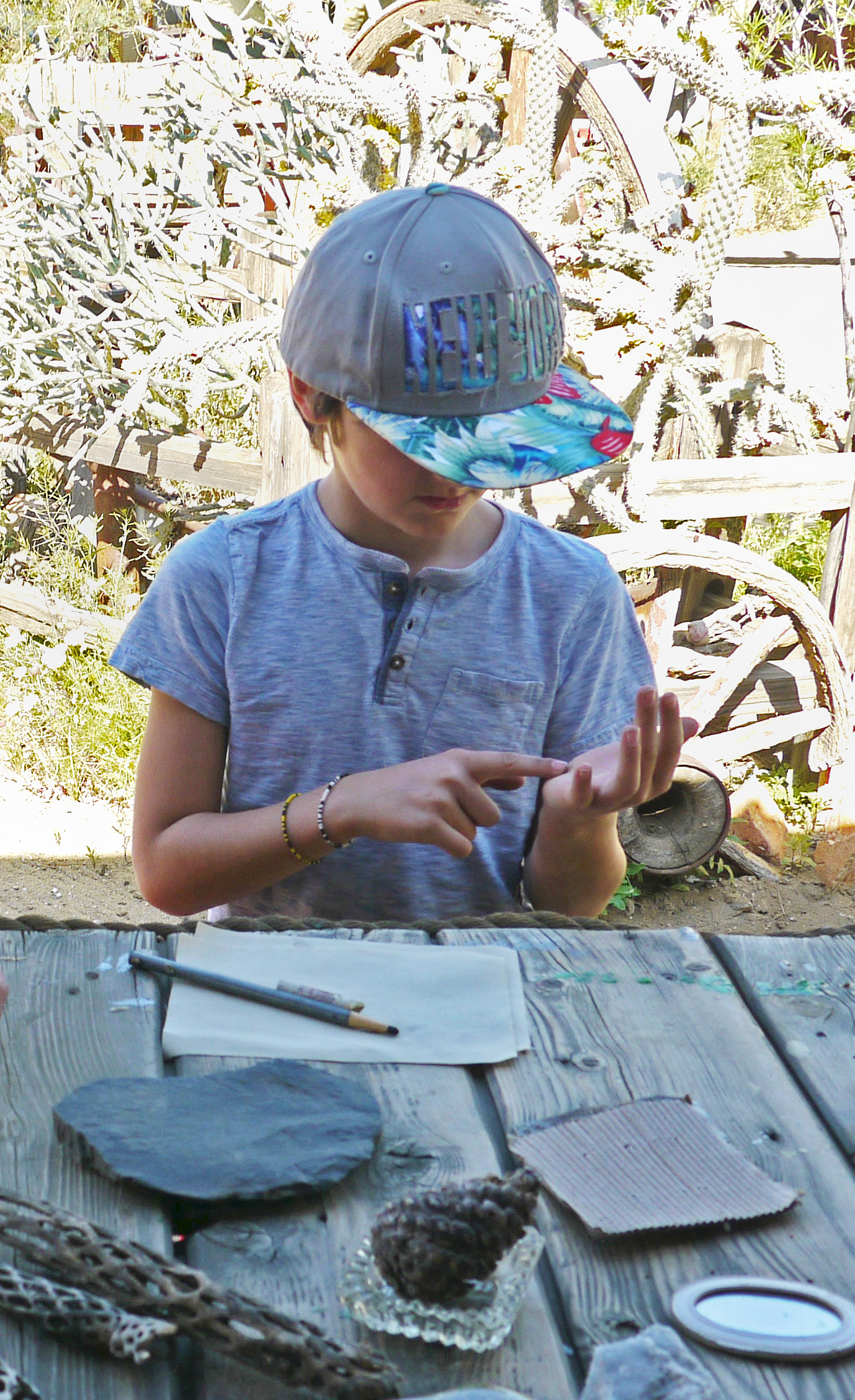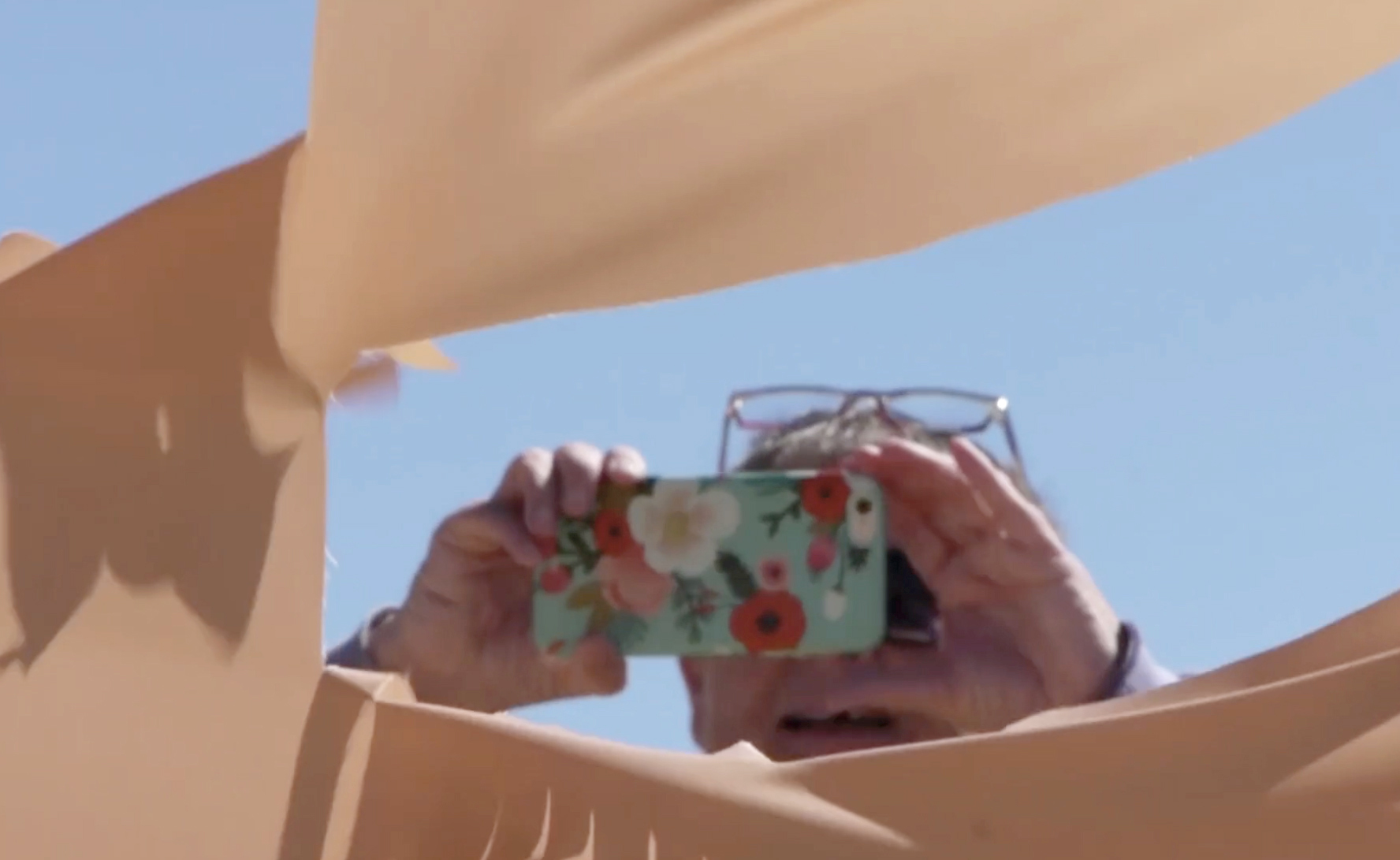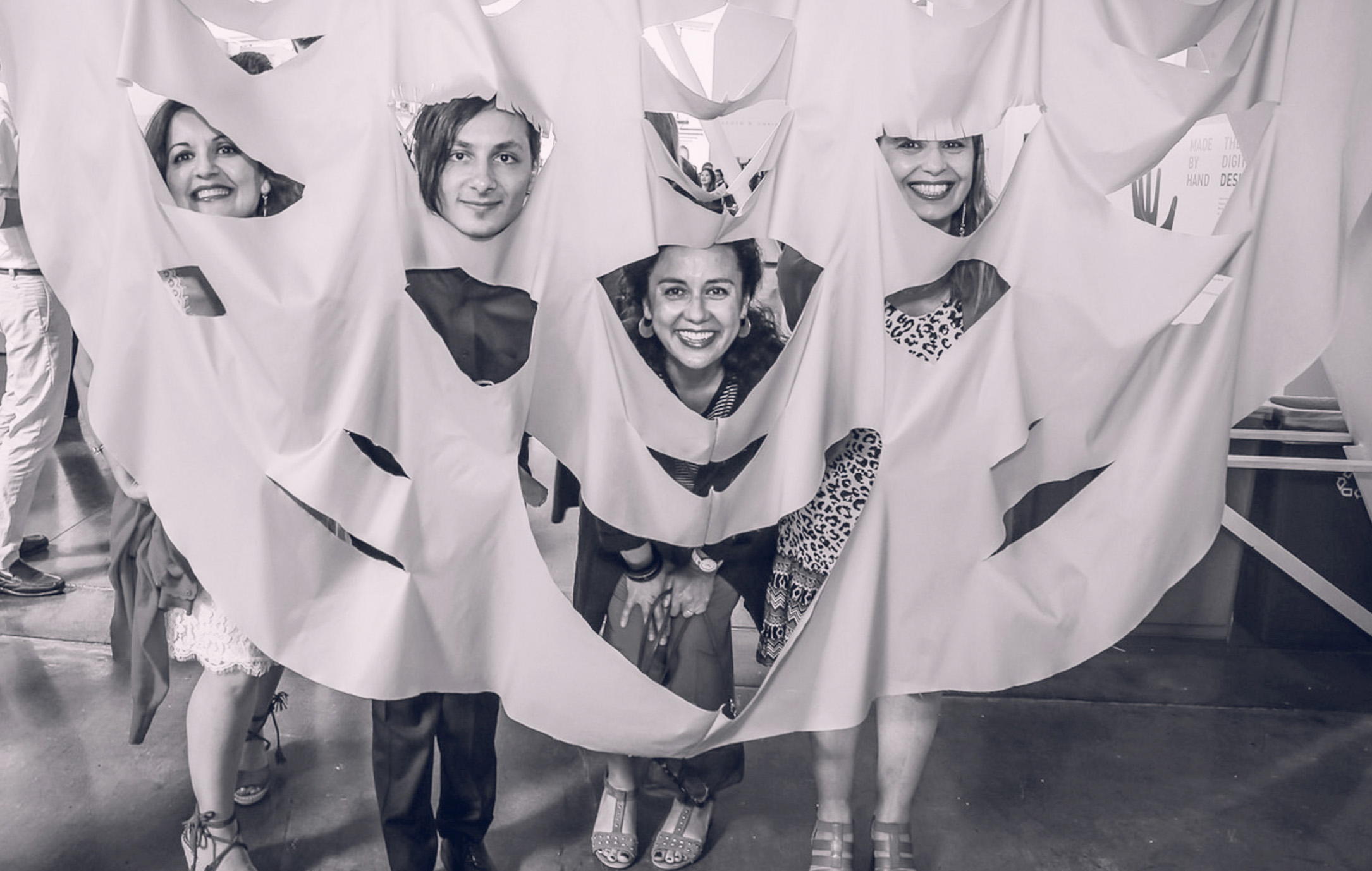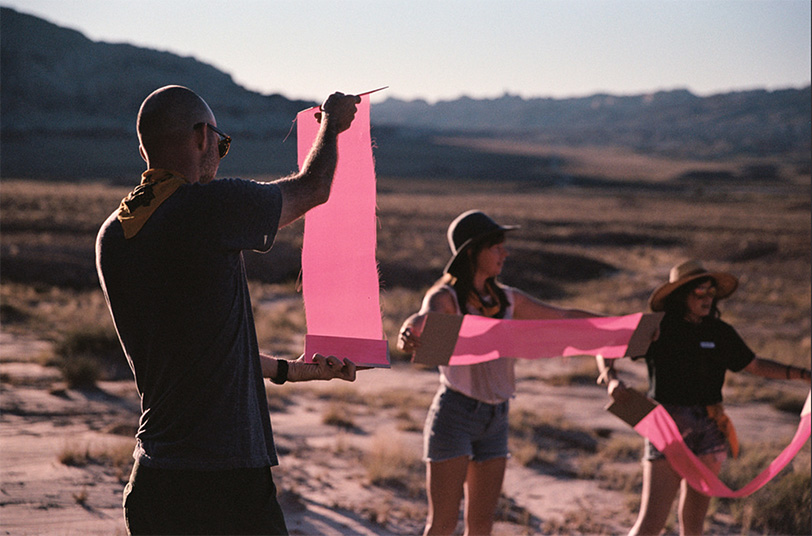Socially Engaged Projects
I have led workshops and participatory projects using textiles as a primary medium since 2015 in California, Poland, and Berlin. I also co-led many backpatch, banner, and quilting workshops throughout the Bay Area as part of my multi–year collaboration Feral Fabric.
In the course of my socially engaged practice, I have collaborated with art spaces such as Berkeley Art Museum and Southern Exposure, made site-specific work in California’s high desert, offered programming in art festivals, and made work in support of social justice.
The Trzepak
A social sculpture and workshop-based project about community and place in Łódż, Poland.
2023
A trzepak (CHEH-pock, carpet-beater) is a monument to a communist past that still exists in the urban landscape of many formerly communist countries and regiions. The trzepak was a place where the private and public met.
In this project, I led a diverse group of participants through six textile workshops, crafting fifteen large floor cushions to be used as seating and conversation corner. These reflected their makers as well as Polish folk art and craft traditions. The project evolved to also include erecting a trzepak in the community’s courtyard.
A social sculpture and workshop-based project about community and place in Łódż, Poland.
2023
A trzepak (CHEH-pock, carpet-beater) is a monument to a communist past that still exists in the urban landscape of many formerly communist countries and regiions. The trzepak was a place where the private and public met.
In this project, I led a diverse group of participants through six textile workshops, crafting fifteen large floor cushions to be used as seating and conversation corner. These reflected their makers as well as Polish folk art and craft traditions. The project evolved to also include erecting a trzepak in the community’s courtyard.
Story Quilts
with Unhoused Communities
2019-2022
This project archived participants’ individual narratives and stories of temporary communities to gain visibility for housing rights in the San Francisco Bay Area.
Feral Fabric later developed a Sew & Mend DIY Kit that was distributed throughout 2022 in response to the Corona pandemic. The kits contained everything recipients needed to express themselves through a textile project, and doubled as tools to repair clothes, tents, or anything else made of fabric.
with Unhoused Communities
2019-2022
This project archived participants’ individual narratives and stories of temporary communities to gain visibility for housing rights in the San Francisco Bay Area.
Feral Fabric later developed a Sew & Mend DIY Kit that was distributed throughout 2022 in response to the Corona pandemic. The kits contained everything recipients needed to express themselves through a textile project, and doubled as tools to repair clothes, tents, or anything else made of fabric.
Quiet Time: String Games
2024
This project is centered around string figures - a game which arose independently in indigenous communities all around the world. Participants experimented with string figures in the ambience of a simple sound and light installation; we filled the screen with shadows, projecting our own experiments and imperfect stories.
2024
This project is centered around string figures - a game which arose independently in indigenous communities all around the world. Participants experimented with string figures in the ambience of a simple sound and light installation; we filled the screen with shadows, projecting our own experiments and imperfect stories.
Meeting around the tablecloth
2024
We drew on the traditional form of the tablecloth, the domestic and gendered associations of embroidery, and the unknown story of the cloth’s original owner to guide conversations about identity, memory, place, and the things that are important to us now.
Looking at tradition vs. what we choose to do and how we respond to and reinterpret these traditions, we made safe and exploratory spaces together, which are grounded in shared craftwork, conversation and exchange that could also bring people outside of the Zusa residency into the circle.
2024
We drew on the traditional form of the tablecloth, the domestic and gendered associations of embroidery, and the unknown story of the cloth’s original owner to guide conversations about identity, memory, place, and the things that are important to us now.
Looking at tradition vs. what we choose to do and how we respond to and reinterpret these traditions, we made safe and exploratory spaces together, which are grounded in shared craftwork, conversation and exchange that could also bring people outside of the Zusa residency into the circle.

We Can Be Heroes:
A Cape Making Workshop in Berlin
2023
This workshop was held in Berlin as part of the public art festival 48Hrs Neukölln, on the festival’s theme of play as a metaphor for social life, rules, and roles. I provided sewing tools, fabrics, and an exploratory space for participants to play with identity by making and wearing capes and creative garments. Participants experimented with, altered, and combined these materials into capes, then wore their creations out into the city.
A Cape Making Workshop in Berlin
2023
This workshop was held in Berlin as part of the public art festival 48Hrs Neukölln, on the festival’s theme of play as a metaphor for social life, rules, and roles. I provided sewing tools, fabrics, and an exploratory space for participants to play with identity by making and wearing capes and creative garments. Participants experimented with, altered, and combined these materials into capes, then wore their creations out into the city.
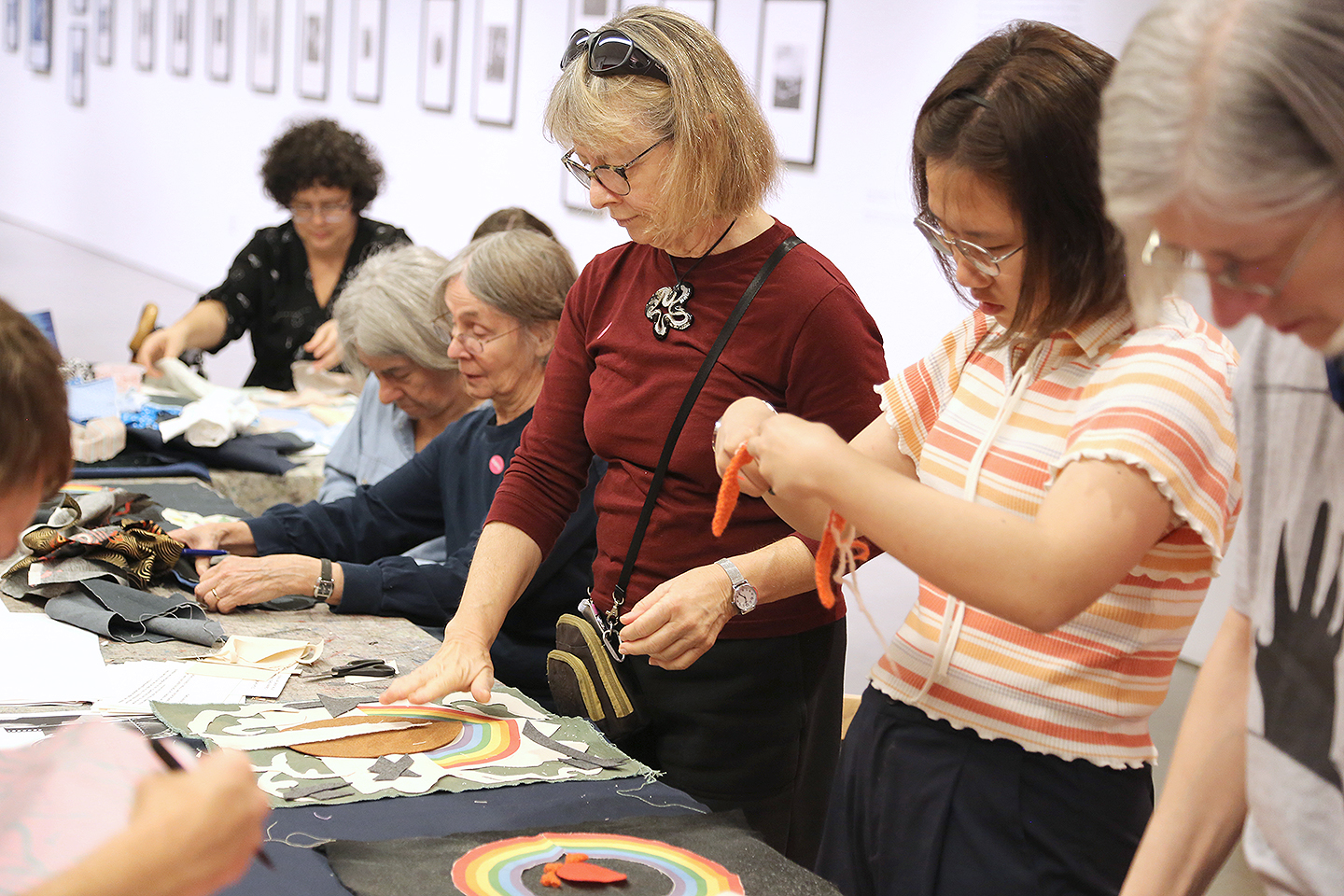
Back Patch Workshops
Berkeley Art Museum
2018, 2021
Feral Fabric led Back Patch workshops twice in Berkeley Art Museum – initially in person in 2018 and then virtually through Zoom in 2021. Feral Fabric led back patch workshops both virtually and in person hosted by art organizations including NIAD Art Center, Southern Exposure, and Scrap Creative Reuse as well as Figment Art Center.
Read about the first Back Patch Workshop at Berkeley Art Museum >
Berkeley Art Museum
2018, 2021
Feral Fabric led Back Patch workshops twice in Berkeley Art Museum – initially in person in 2018 and then virtually through Zoom in 2021. Feral Fabric led back patch workshops both virtually and in person hosted by art organizations including NIAD Art Center, Southern Exposure, and Scrap Creative Reuse as well as Figment Art Center.
Read about the first Back Patch Workshop at Berkeley Art Museum >
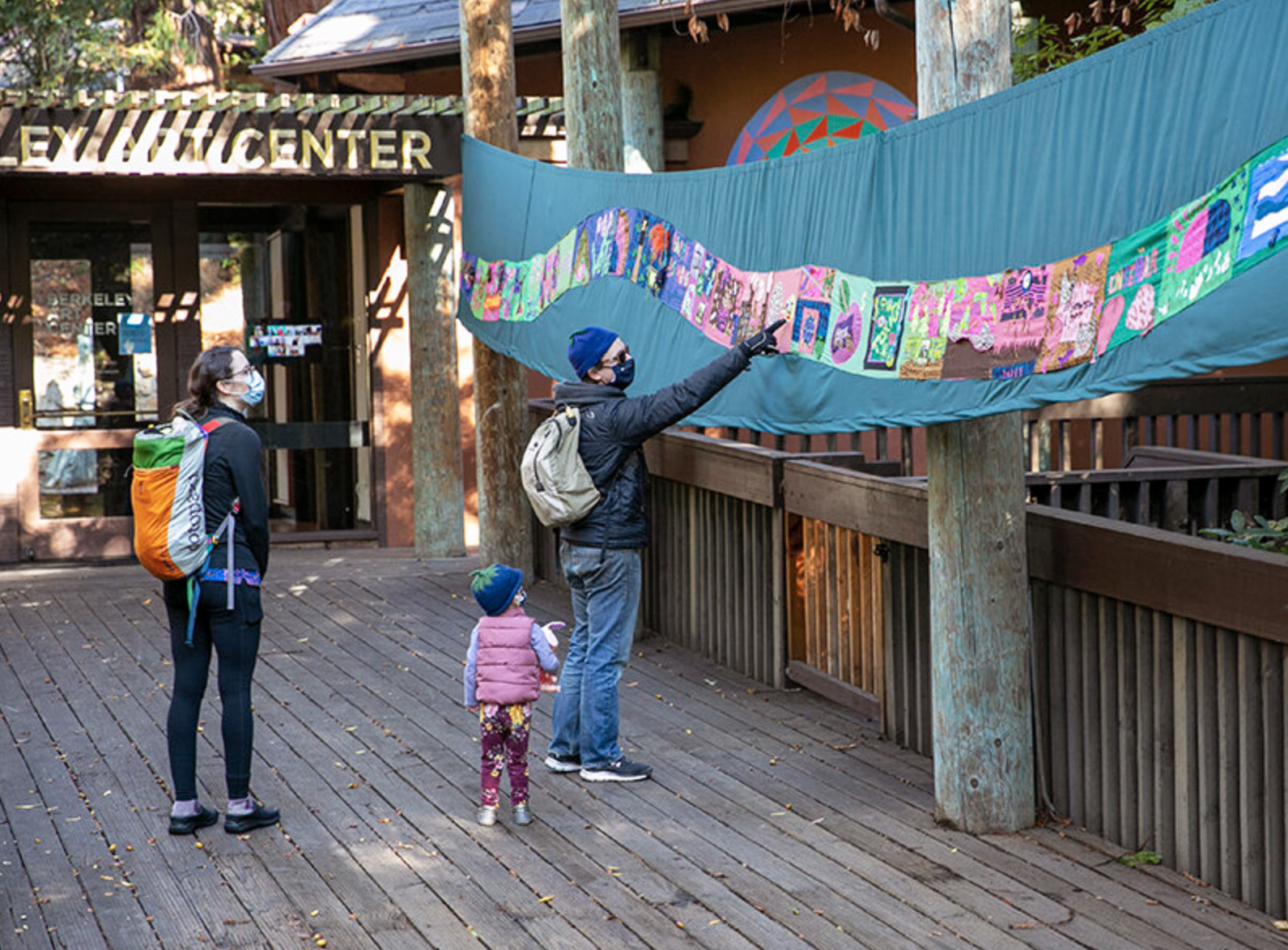
Community Snake Banner, The Workshop
Berkeley Art Center
2020
Feral Fabric distributed and mailed craft kits to participants, then led a virtual workshop. Participants created elements that were combined into the shape of a snake: a symbol of regeneration. The finished 30’ long banner was exhibited outside the Art Center, The accompanying video The Workshop was shown through a window.
This project was commissioned by Berkeley Art Center.
> See more on the BAC website
> Check out The Workshop video
Berkeley Art Center
2020
Feral Fabric distributed and mailed craft kits to participants, then led a virtual workshop. Participants created elements that were combined into the shape of a snake: a symbol of regeneration. The finished 30’ long banner was exhibited outside the Art Center, The accompanying video The Workshop was shown through a window.
This project was commissioned by Berkeley Art Center.
> See more on the BAC website
> Check out The Workshop video
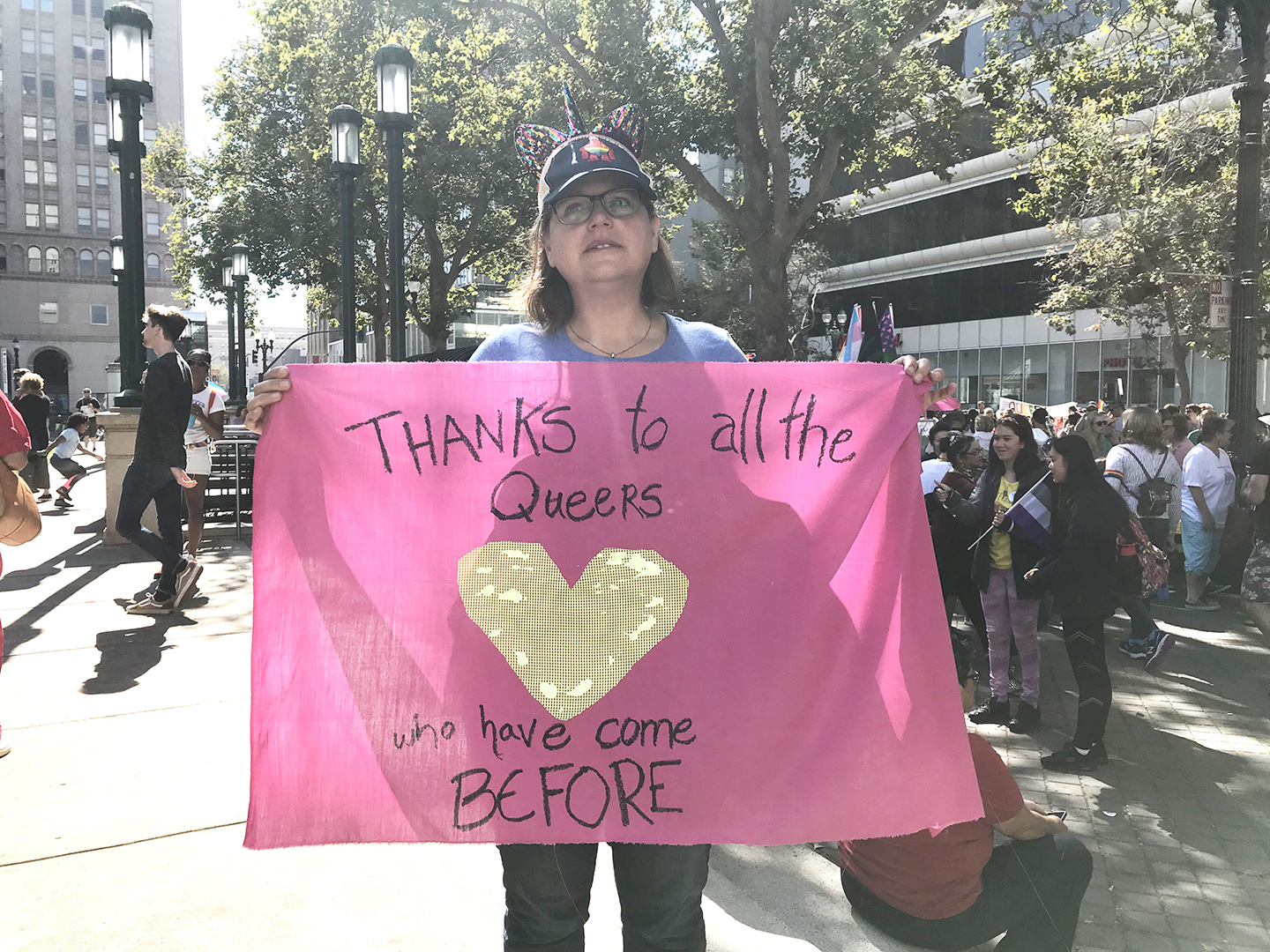
Banner Workshop
at Oakland Pride Parade
2018
Early on, Feral Fabric led free workshops as Pop-up and street events. This included a banner-making workshop at the Oakland Pride Parade and in support of workers’ rights at May Day. Through Sunday Streets, Feral Fabric also led a series of textile-based workshops focused on community pride in San Francisco’s Tenderloin, Mission, and Western Addition neighborhoods.
at Oakland Pride Parade
2018
Early on, Feral Fabric led free workshops as Pop-up and street events. This included a banner-making workshop at the Oakland Pride Parade and in support of workers’ rights at May Day. Through Sunday Streets, Feral Fabric also led a series of textile-based workshops focused on community pride in San Francisco’s Tenderloin, Mission, and Western Addition neighborhoods.
Site-Specific Work in the High Desert2015-2021
I have led site-specific, textile-based workshops in the desert, mostly with High Desert Test Sites and JTLab in the desert outside Joshua Tree, California. These workshops have included a Story Quilt, A Community Banner, Being There (a work about presence), and two wind and landscape-responsive works.
See some of these projects >
I have led site-specific, textile-based workshops in the desert, mostly with High Desert Test Sites and JTLab in the desert outside Joshua Tree, California. These workshops have included a Story Quilt, A Community Banner, Being There (a work about presence), and two wind and landscape-responsive works.
See some of these projects >
Flag Zine
2015
In this plein-air participatory artwork, each person was given a textile object that they could use to alter their perception of and experience in the immediate desert landscape. Each object consisted of an “arm’s length” of translucent neon fabric, sandwiched between simple chipboard covers. Participants experimented with looking through the zines and eventually worked together to form a structure by entwining the fabric together.
2015
In this plein-air participatory artwork, each person was given a textile object that they could use to alter their perception of and experience in the immediate desert landscape. Each object consisted of an “arm’s length” of translucent neon fabric, sandwiched between simple chipboard covers. Participants experimented with looking through the zines and eventually worked together to form a structure by entwining the fabric together.
